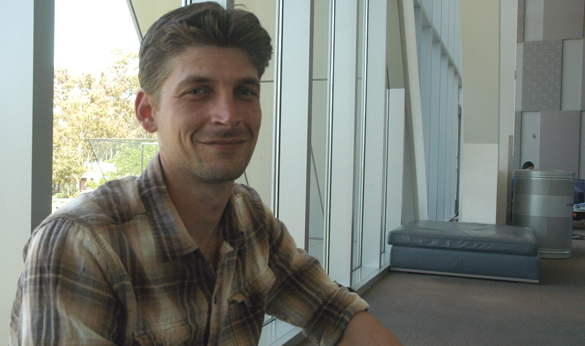Senior Scott Bigney was selected for membership in the International Association of Obsidian Studies (IAOS) in recognition of his research on “Characterization of Obsidian from Five Late Postclassic Sites in the Soconusco Region of Chiapas, Mexico.” He presented his findings, which were co-authored by mentors Janine Gasco, associate professor of anthropology, and Dr. Hector Neff, professor of anthropology at CSU Long Beach, at Student Research Day at California State University, Dominguez Hills last February and at the annual meeting of the Society for American Archaeology in Sacramento last March. In addition to the two-year membership and access to IAOS’s archives and materials, Bigney’s work will be published in the organization’s biannual journal.

IAOS lauded Bigney for his “important methodological and regional contribution to the field of archaeological obsidian studies.” He says that his examination of the chemical signature of obsidian samples from Soconusco allowed him to trace their source to a particular volcano using X-ray fluorescents. The information revealed not only the origin of the obsidian specimen but also has the potential to uncover information on who may have visited inhabitants of the region. Bigney says that the ability to uncover this information as an undergraduate was a real advantage.
“If you were to do visual sourcing, it would take years of practice to be accurately able to define the source and where it came from,” he says.

A transfer student from Orange Coast College, Bigney says that he was drawn to CSU Dominguez Hills by reputation of the university’s anthropology department. The journal editor for the Anthropology Club at CSU Dominguez Hills says that he and his fellow students are pursuing a broad range of goals within the discipline.
“They [are trying] to figure out where exactly their root in anthropology is going to be, whether it is cultural, archaeological, linguistic, or biological… to understand the process of humanity,” he says.
Bigney, who looks forward to earning his doctorate and one day teaching at the college level, says he was drawn to the study of anthropology at a young age while watching the adventures of movie character Indiana Jones, who he calls “the worst archaeologist in the world.”
“As I developed, I was able to glean the knowledge of past civilizations through archaeological remains and compare those to historical and ethnohistorical documents, ethnographies, and lingustics,” says Bigney, who has served as an intern for Neff for the last year-and-a-half. “It’s fascinating that you can get so much out of all that.”
This summer, Bigney was hired to work on a regional survey with Dr. Robert Rosenswig of SUNY (State University of New York) Albany. They are currently in Chiapas, Mex., surveying the ruins of Izapa, an archaeological site on the southern coast. Bigney says that the objective of the project is to explore and extend the existing boundaries of the pre-Columbian civilization and to establish a greater understanding of Izapan settlement patterns.
“I am having an amazing time here working and communicating with the locals,” Bigney says. “They are all very generous, kind, and understanding people, as well as having an extreme interest into their land’s past inhabitants.”